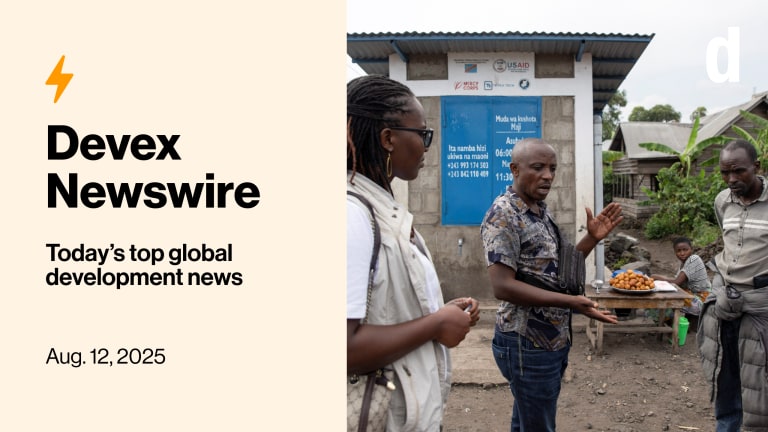
Examining the work of Rajiv Shah, it’s hard not to be struck by the wide variance in opinion on the man’s legacy as the youngest-ever U.S. aid chief in history.
On one side of the spectrum, close confidantes and supporters of Shah, like his former deputy Donald Steinberg, claim the transformation he led was “as fundamental as anything that has occurred in the history of the agency.”
Then there are observers like Brookings Institution Senior Fellow George Ingram who point to the difficulty of reorienting an institution as massive as the U.S. Agency for International Development. Its administrator is, at once, “the most important person in the agency to influence the culture,” and yet he’s endowed with “limited influence and impact.” Change takes time.
Skeptics wonder whether perceived changes of the last half decade at USAID have more to do with forces well beyond the administrator’s control — the increasing role of the private sector in global development, for example. Shah, these skeptics may say, has merely acknowledged these trends and taken some of the credit for shifts already underway.
See more stories on U.S. aid:
● Rajiv Shah's USAID legacy
● Which countries are winners, losers (and in-between) in Obama's 2016 foreign aid proposal?
● Obama's 2016 foreign aid proposal: the country-level data
After all, some of the things often attributed to Shah, such as staff increases, a new model for investing in agriculture programs and a greater focus on science and innovation were in the works before his arrival — and pushed by peers like the former Secretary of State Hillary Clinton — even if they matured during his tenure. Would they have done so the same way without him? Of course, it’s impossible to know.
In a slow and contested process like development, tied to such complex and global forces as poverty, population growth and climate change, how much does one leader actually matter? Where does their impact most noticeably accrue?
One point of agreement among people my colleagues and I have spoken with over the past few years on Shah’s impact is that he has been successful in raising USAID’s public and political stature during his time in office. Even critics allow that Shah rebuilt the agency’s profile from a low point of previous decades, returned a sense of “intellectual leadership” to Washington’s Ronald Reagan Building, where USAID is headquartered, and relieved the immediate threat that the agency’s mission would fold even farther into the overarching structure of the State Department.
But the importance placed on the political and public relations side of the administrator job speaks to a larger challenge, which Shah himself has sought — and struggled — to confront: constituency. Ask yourself: Where did USAID’s public image problem come from in the first place; was it the agency’s own doing or did it reflect popular opinion about foreign aid?
See more procurement opportunities from USAID.
Check out job openings at USAID.
Shah may be judged on whether he has made U.S. foreign assistance programs more effective, or on his ability to convince lawmakers that they should support an agency whose mission is to eradicate poverty abroad, not at home. His challenge has been complex, to say the least: to carry out overseas missions effectively while defending their practical and moral justification at every turn.
Perhaps more than a referendum on his own achievements, the variance in opinions on Shah’s legacy speaks to a deep ambiguity concerning the nature of leadership itself.
As long as U.S. foreign assistance programs are so poorly understood by most Americans, who regularly overestimate the amount we spend on them by a factor of 20, the next USAID chief will have to continue to juggle a mandate to improve development impact and the necessity of explaining why U.S. taxpayers and their elected representatives should lend support.
What makes for a successful foreign aid leader, and how would you rate Rajiv Shah’s performance as USAID chief? Chime in by leaving a comment below.
Stay tuned to Devex for more news and analysis of U.S. aid, and subscribe to The Development Newswire to receive the latest from the world’s leading donors and decision makers — emailed to you FREE every business day.








